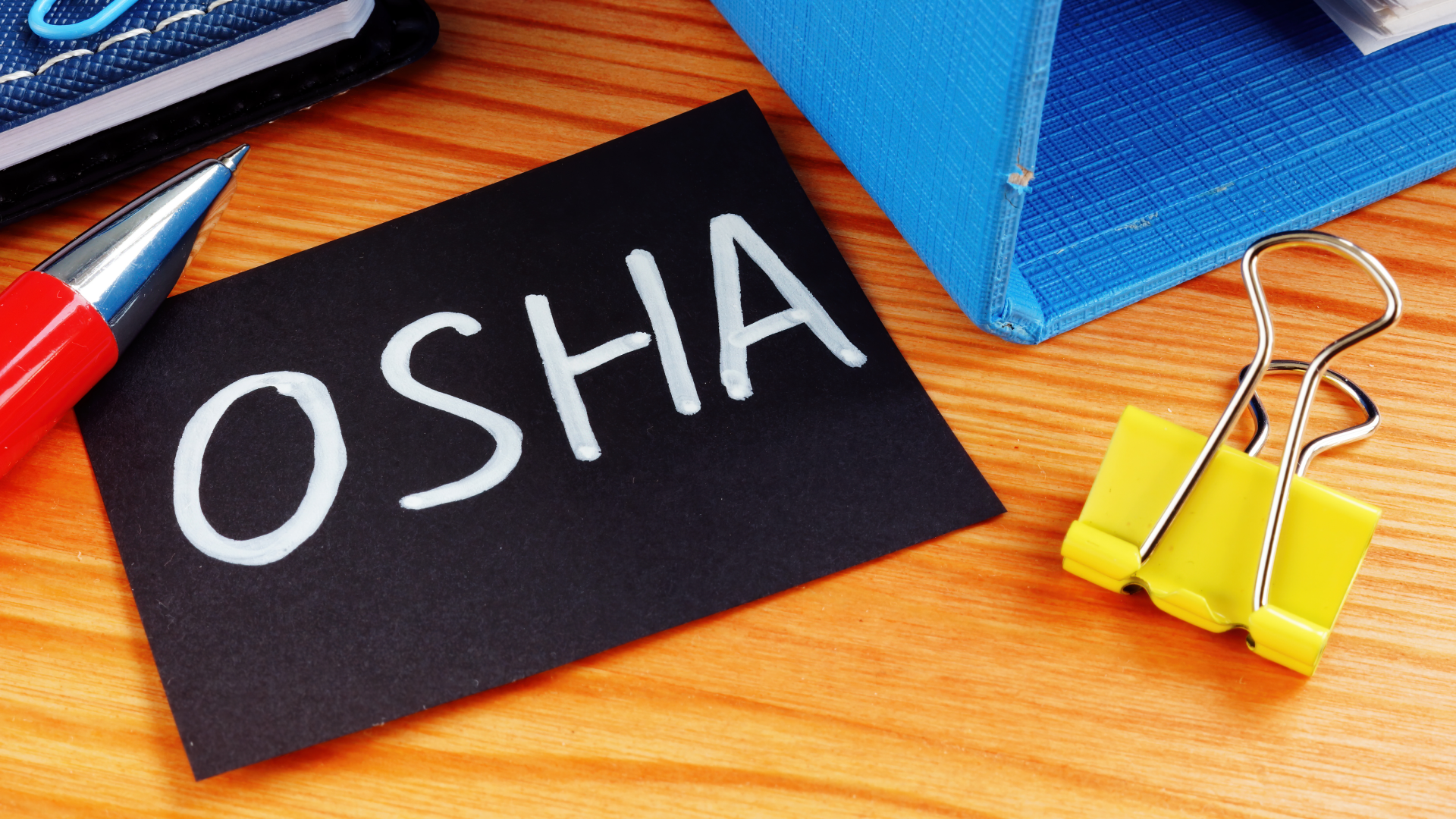
The Occupational Safety and Health Administration (OSHA) is the government agency that monitors and enforces compliance with workplace safety laws. Under the Occupational Safety and Health Act, Compliance Safety and Health Officers (CSHOs) have the authority to inspect the facilities of any employer subject to OSHA’s regulations. Employers have a right to request a warrant for inspection. Although it may buy time, it will likely broaden the inspection and give the CSHO a negative impression.
Common Reasons for an OSHA Inspection
- Imminent danger situations
- Fatalities or severe injuries reported to OSHA
- Worker complaints
- Referral inspections (other agencies, third parties or media)
Preparing for an OSHA Inspection
- Have principal contacts for the inspection. Document the list of designated employees and train them on all aspects of an OSHA audit. Ensure enough personnel are trained in case of a scheduling conflict.
- Decide where the CSHO will be placed and where employee interviews will occur.
- Have updated safety documentation prepared to be presented to the CSHO.
- Train all managers on how to contact the proper personnel and where to place the CSHO while everyone is being notified.
- Assemble an inspection kit. This kit should include:
- A camera for video and photography recording
- Required personal protective equipment (PPE)
- Labels or stamps to mark information that should be tagged as "confidential" or "trade secret"
- Basic facility information (e.g., type of work performed, number of employees, names of management personnel and a list of contact information)
- Contact information for the local OSHA office
- Testing equipment (Check calibrations and expirations on equipment regularly)
Safety Documentation to Have
- OSHA 300 Form for the current year and the previous five calendar years
- OSHA 300A Form for the previous five calendar years
- Injury and incident reports for the current year and the previous five calendar years
- OSHA 301 Forms (Most state workers' compensation forms are acceptable substitutes.)
- Completed training programs
- Safety data sheets (SDSs)
- Written safety compliance programs
When the OSHA Compliance Safety and Health Officer Shows Up
- Be polite. Greet the office and ask to see their credentials, if they do not offer to show them. Confirm those credentials, or call your local OSHA office for any questions.
- Place the CSHO in the pre-determined private conference room or office.
- Notify the designated company employees who will need to take part in the inspection.
During the Opening Conference
- Determine the purpose of the inspection. If there has been a complaint, ask for a copy of the complaint. OSHA will protect the identity of any employee who has submitted a complaint.
- Define the scope of the inspection, and limit consent only to the areas cited in the complaint. This is the time to configure a route for the walk-around, which should be as limited as possible.
- Identify areas of the workplace or documents that might contain trade secrets. Confirm with the CSHO that photographs and/or documents containing information about trade secrets will remain confidential.
- Discuss the process for conducting employee interviews and producing documents. If possible, schedule employee interviews so shifts are covered.
- Ask the CSHO to make all requests for company information and document in writing. Your company’s legal counsel should review all requests for documents and information, as well as all information and documents provided.
- Gather your inspection equipment.
During the Walk-Around
- Begin the walk-around. Make sure everyone has the required PPE and is following the proper safety protocols of the site.
- Keep the route as limited as possible.
- Understand the plain view doctrine. This means a CSHO can investigate any hazard observed while walking through the premise.
- Document the CSHO’s findings and your own findings by taking detailed notes.
- Make sure to take pictures, samples and measurements of anything the CSHO takes, and at the same time. Your company can request that samples and monitoring take place at a time when the company can conduct its own sampling and monitoring.
- Complete “quick fixes” right away. If you or the CSHO identifies any quick fix items, have them taken care of immediately. The CSHO will take these actions as proof of your company’s willingness to comply with safety and health laws.
- Do not interfere with employee interviews. The CSHO has the right to conduct employee interviews in private. Employee interviews may involve labor representatives, rank and file employees, and management personnel. If there is an interview of a company decision-maker, then it is highly encouraged to have a representative present as any statements made are considered binding admissions on the employer.
During the Closing Conference
- Request copies of all OSHA samples and monitoring reports from the CSHO.
- Ask the CSHO to provide you with an acknowledgment of receipt for all documentation provided during the inspection.
- Provide the CSHO with the name, title and contact information of the person(s) to whom all OSHA correspondence should be directed.
- List out any alleged violations that have already been corrected. If directed by legal counsel, provide additional information and documentation relevant and supportive of the company’s position as well as any information which shows abatement of any alleged violation.
- Do not make any impulsive commitments, for example corrective actions or dates.
- Discuss possible violations. Understand that only the OSHA Area Director can issue citations, and this process can take up to six months after the inspection. The Area Director may rely on a CSHO’s recommendations to issue a citation, but CSHOs may be hesitant to address whether they will recommend a citation during their visit to your facility.
After the Closing Conference
- Try to obtain all sample and monitoring reports from OSHA.
- Provide the company’s legal counsel with copies of all of the documents provided to OSHA and all of the notes, photographs, videos, etc., taken during the inspection.
- Reference an up-to-date copy of OSHA’s Field Operations Manual. Look this over to determine whether there were any issues during the audit. Any information found can be used as supporting documentation to negotiate a settlement.
Citations
If your facility receives citations from OSHA, you should:
- Post the citation. Post citations in all areas in which the violation occurred. The citations must be posted for three working days or until the violation has been corrected, whichever is later.
- Notify your legal counsel. Immediately notify the company’s legal counsel about the citation and send a copy of the citation to them.
- Start the Abatement Process. Review all areas noted by the CSHO and all violations from previous inspections (if any), and correct any issues that were found within the time frame stated on the citation. Document the corrections to show that abatement was completed. It is important to make sure all hazards are corrected, or you may be assigned larger penalties during subsequent inspections.
- Make note of all deadlines. This avoids creating a short turnaround time to complete abatement measures.
Violation Classifications and Penalty Amounts of OSHA Citations
- De Minimis
- Violation based on technical standards, and does not involve any threat to the safety and health of employees.
- Typically, doesn't carry any penalty.
- Other Than Serious
- Classified as unlikely to cause serious physical harm or death.
- $14,502 per violation.
- Serious
- Hazards that could cause serious bodily harm or death.
- $14,502 per violation.
- Willful
- The employer committed the violation knowingly or with indifference.
- $145,027 per violation.
- Repeated
- A hazard of a same or similar standard that the employer was aware of before, received a citation for and has not mitigated.
- $145,027 per violation
- Criminal
- A violation that caused a death and was willful in nature. A violation of this nature is punishable by a misdemeanor conviction and a significant monetary penalty.
- Maximum Penalty: Not more than $250,000 for an individual or $500,000 for an organization and up to six months in jail.
Appeals Process
Once you receive a citation, you have a few options for what to do. You can schedule an informal conference with the OSHA Area Director to discuss the violations and try to reach a settlement agreement. If you are unable to reach an agreement, then you can either pay the citation or file a Notice of Contest to pursue a formal hearing.
Informal Conference
You may request an informal conference with the OSHA Area Director to reach a settlement agreement. You are able to discuss citations, penalties, abatement dates or any other information pertinent to the inspection. Though they are informal, be prepared for the conference. Employers can present defenses to citations, and OSHA may agree to withdraw some citations or lower the penalty. Consider the following tips for productive informal conferences:
- Schedule the informal conference promptly. The conference must be held before the end of the 15-day period for filing the Notice to Contest. Please note that there may be some differences in timelines and procedures between federal OSHA offices and agencies run by OSHA-approved state programs.
- Discuss citations and remedial measures taken. If your goal is to have OSHA vacate the citation, be ready to explain why the citation is incorrect or unwarranted.
- Use supporting documents. Even though this is informal, prepare and review your case with your company’s legal counsel. Use an evidence-based approach. Be sure that OSHA has objective evidence regarding each alleged violation. Explain any mitigating circumstances and showcase your company’s commitment to safety.
- Keep track of all issues and their status. You want to make sure every item was resolved.
Remember, OSHA Area Directors want to reach a settlement. Their main goal is to make sure you rectify the identified hazards and are compliant. If you do not reach a settlement conference, then decide whether you should pay the fine or contest it. There may be a reduction in the penalty if the inspection went well; you may have to pay the penalty early in order to pay the discounted amount.
Formal Hearing
If you are contesting the citation, make sure to review timelines and dates for submitting requests and documentation. You must file a Notice of Intent to Contest within 15 working days. By filing a Notice of Contest, the file is transferred over to the Department of Labor to the Office of the Solicitor to begin litigation. A formal hearing will be scheduled and take place in front of an Administrative Law Judge. Formal hearings can be appealed in federal court.
For additional OSHA resources, contact Simco today.
Sign up for our newsletter.




